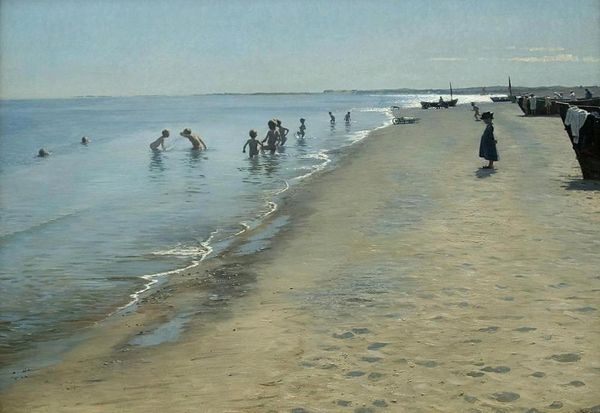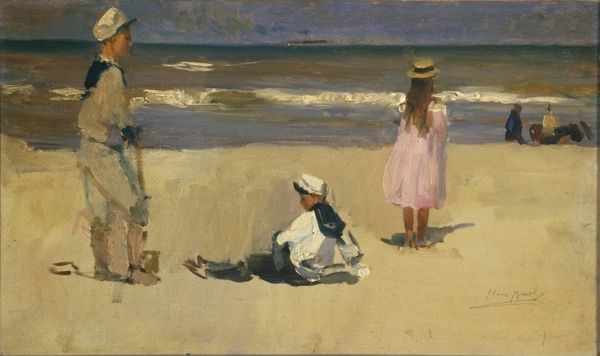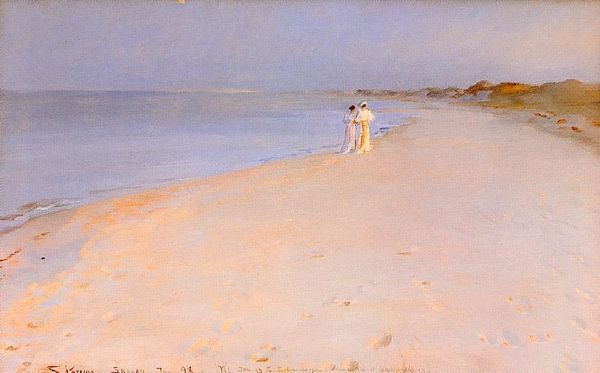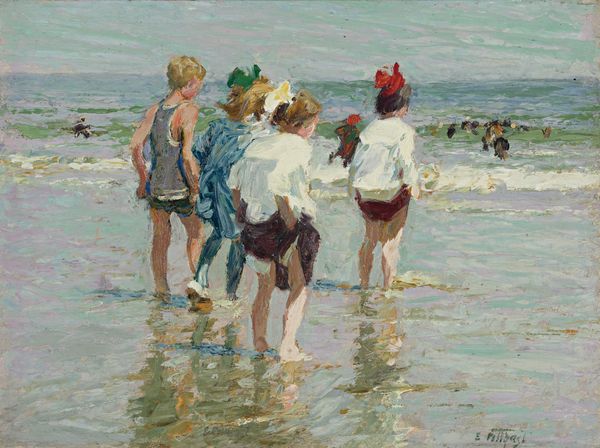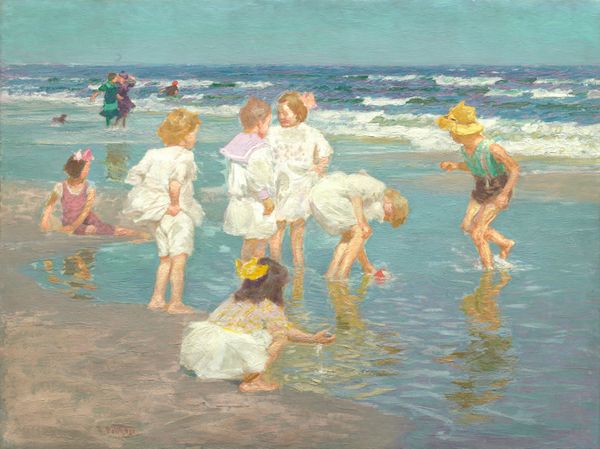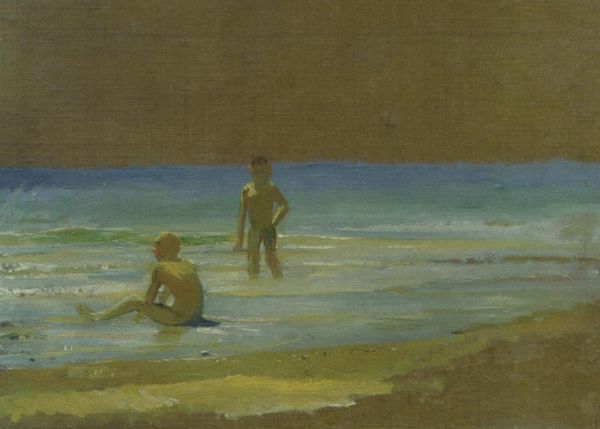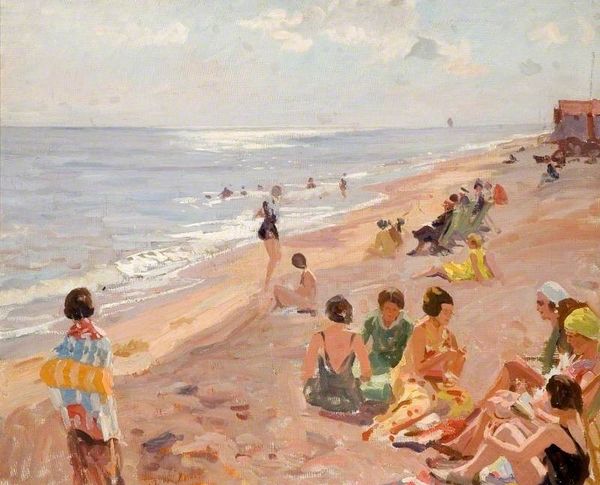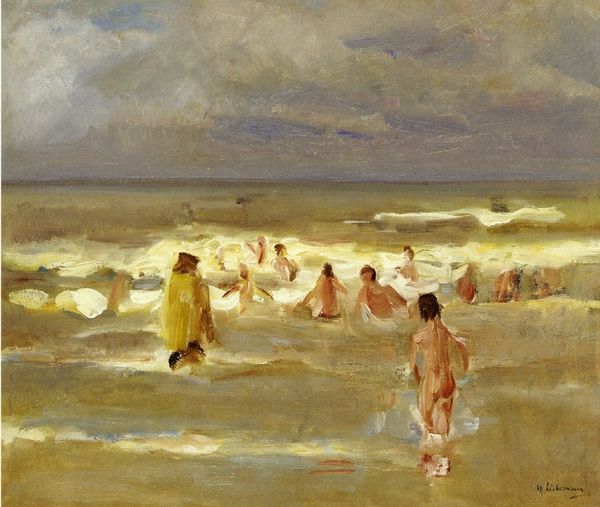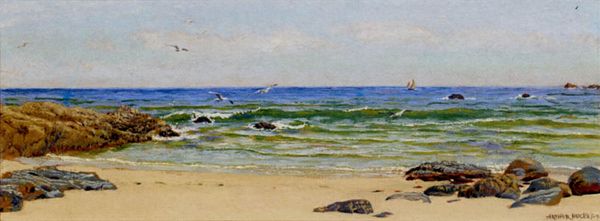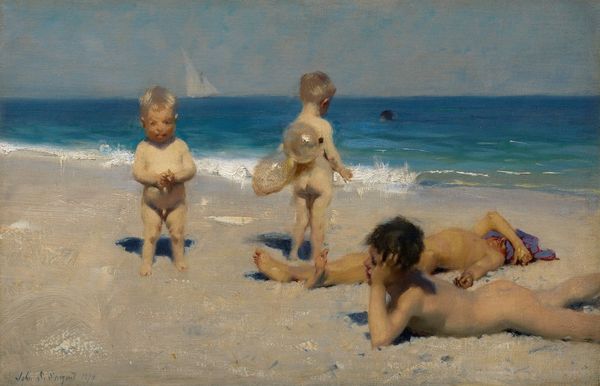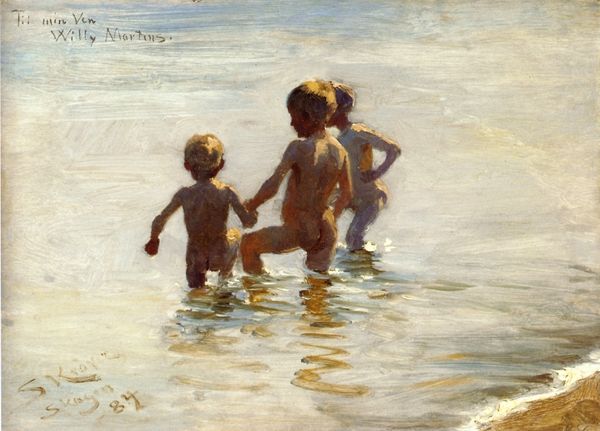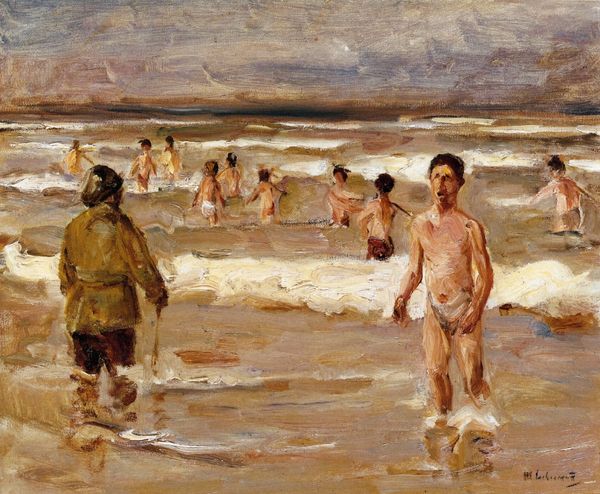
Copyright: Public domain
Editor: So this is “Boys Bathing” by Peder Severin Krøyer, painted in 1892. It seems to be watercolor on canvas, capturing boys at play in the surf. I’m struck by the way the light makes the whole scene feel almost dreamlike. What do you see in this piece? Curator: Beyond the shimmering light, I see echoes of a classical ideal, reworked within an impressionistic frame. The nude figures, though realistically rendered, evoke a sense of timelessness, a connection to antique sculpture of youths engaged in athletic pursuits. What about the symbolism of the sea itself? Editor: The sea? Well, it’s the backdrop, isn't it? Limitless freedom? Curator: Consider its historical resonance: The sea has always been a boundary, but also a connector, a place of both danger and renewal. Think of baptismal rites or the journey of souls. Krøyer's choice of subject matter might speak to the transitional moment of boyhood, of innocence edging toward the unknown depths of adulthood. Notice how these children aren’t sexualized, they carry only a symbolic innocence of mind in movement and joy. Editor: That’s fascinating; I hadn’t considered the connection to classical sculpture or the deeper symbolic weight of the sea. Now I see this piece more as an invitation into a symbolic world. Curator: It is Krøyer showing us a portal. Does examining it make you recall any figures of children or symbolic oceanic archetypes in our contemporary world? The image connects, even unconsciously, across different cultures of knowledge and the passage of time. Editor: I never expected to consider the work’s relation with the art of the ancient world when I saw children playing. The symbolic layers make this so much richer! Curator: Exactly. The seemingly simple scene becomes a locus of cultural memory and a reflection on universal experiences of youth and transition.
Comments
No comments
Be the first to comment and join the conversation on the ultimate creative platform.
